Dungeon Master Dispatch
Dealing With Difficult Players
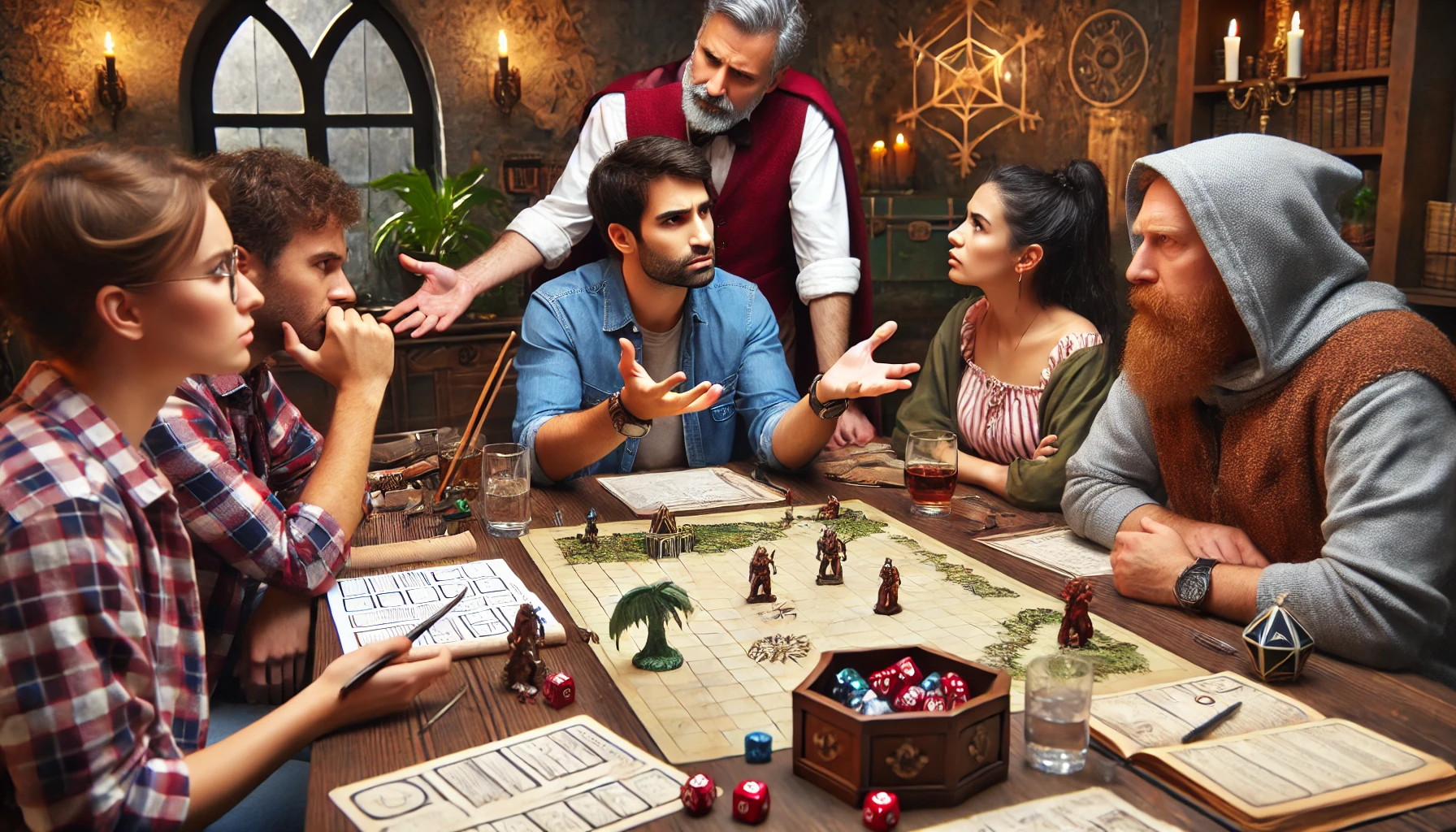
Running a Dungeons & Dragons campaign is a rewarding but challenging task that requires a balance of storytelling, rule management, and group dynamics. One of the most crucial aspects of maintaining a successful campaign is ensuring that everyone at the table has a positive and enjoyable experience. However, this can sometimes be difficult when you encounter players whose behaviors disrupt the flow of the game or create tension among the group.
Dealing with difficult players is an inevitable part of being a Dungeon Master, but it doesn’t have to derail your campaign. With the right strategies and approaches, you can manage conflicts effectively, turning potentially disruptive situations into opportunities for growth and stronger group cohesion.
In this article, we’ll explore various types of difficult players you might encounter and provide practical strategies for preventing and resolving conflicts at the table. Whether you’re dealing with a rules lawyer who constantly challenges your decisions, a spotlight hog who overshadows other players, or a disruptive player who derails the game, the tips and techniques outlined here will help you navigate these challenges with confidence. By fostering open communication, setting clear expectations, and handling conflicts with care, you can create a harmonious gaming environment where everyone has the opportunity to enjoy the adventure.
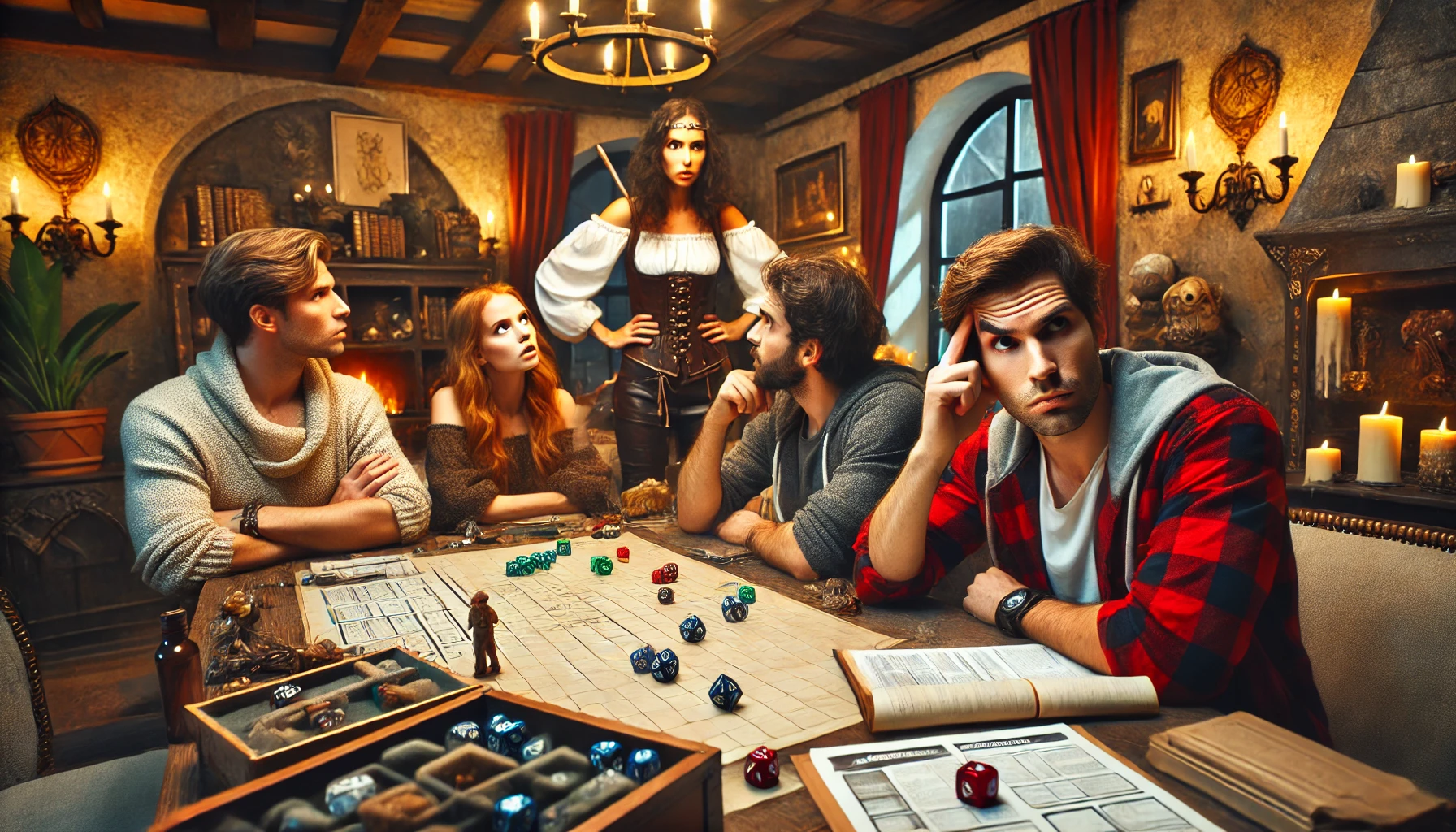
Understanding the Types of Difficult Players
As a DM running a D&D campaign, you’ll encounter a wide variety of player personalities at your table. Most players are there to enjoy the story, contribute to the game, and collaborate with others. However, occasionally, you may come across players whose behavior can disrupt the flow of your Dungeons & Dragons sessions. Understanding the different types of difficult players is the first step toward effectively managing them and maintaining a harmonious game environment.
The Disruptive Player
The Disruptive Player is someone who constantly interrupts the game, makes off-topic comments, or engages in behavior that distracts others from the story. This type of player can break the immersion of the session and make it difficult for other players to stay focused on the narrative. As a DM, it’s essential to recognize when a player’s behavior is becoming disruptive so you can address it before it derails the entire session.
The Rules Lawyer
The Rules Lawyer is a player who frequently challenges or questions the DM’s rulings, often to the detriment of the game’s flow. While it’s important to have players who understand the rules of Dungeons & Dragons, the Rules Lawyer can sometimes take this to an extreme, disrupting the game with constant corrections or debates over minor details. This behavior can slow down the game and create tension among the players, especially if the Rules Lawyer’s interpretations differ from the DM’s.
The Spotlight Hog
The Spotlight Hog is a player who dominates the game, often taking center stage at the expense of other players. This type of player might always want to be the hero, solve every problem, or make every decision, leaving little room for others to contribute. In a D&D game, where teamwork and collaboration are key, a Spotlight Hog can create frustration and resentment among the other players.
The Uncooperative Player
The Uncooperative Player is someone who refuses to work with the party, often pursuing their own agenda or making decisions that conflict with the group’s goals. This can lead to in-game conflicts and disrupt the overall narrative. In Dungeons & Dragons, where the party’s success often depends on cooperation, an Uncooperative Player can create significant challenges for the DM and the rest of the group.
The Distracted Player
The Distracted Player is someone who is frequently disengaged, checking their phone, talking to others, or otherwise not paying attention to the game. This behavior can slow down the session and make it difficult for the DM to maintain momentum. In a game like D&D, where the story and mechanics often require players’ full attention, a Distracted Player can be particularly challenging to manage.
By understanding these common types of difficult players, you, as a DM, can better prepare to address their behaviors and keep your Dungeons & Dragons game running smoothly. Each of these player types presents unique challenges, but with the right strategies, you can help guide them back on track and ensure that everyone at the table has a positive experience.
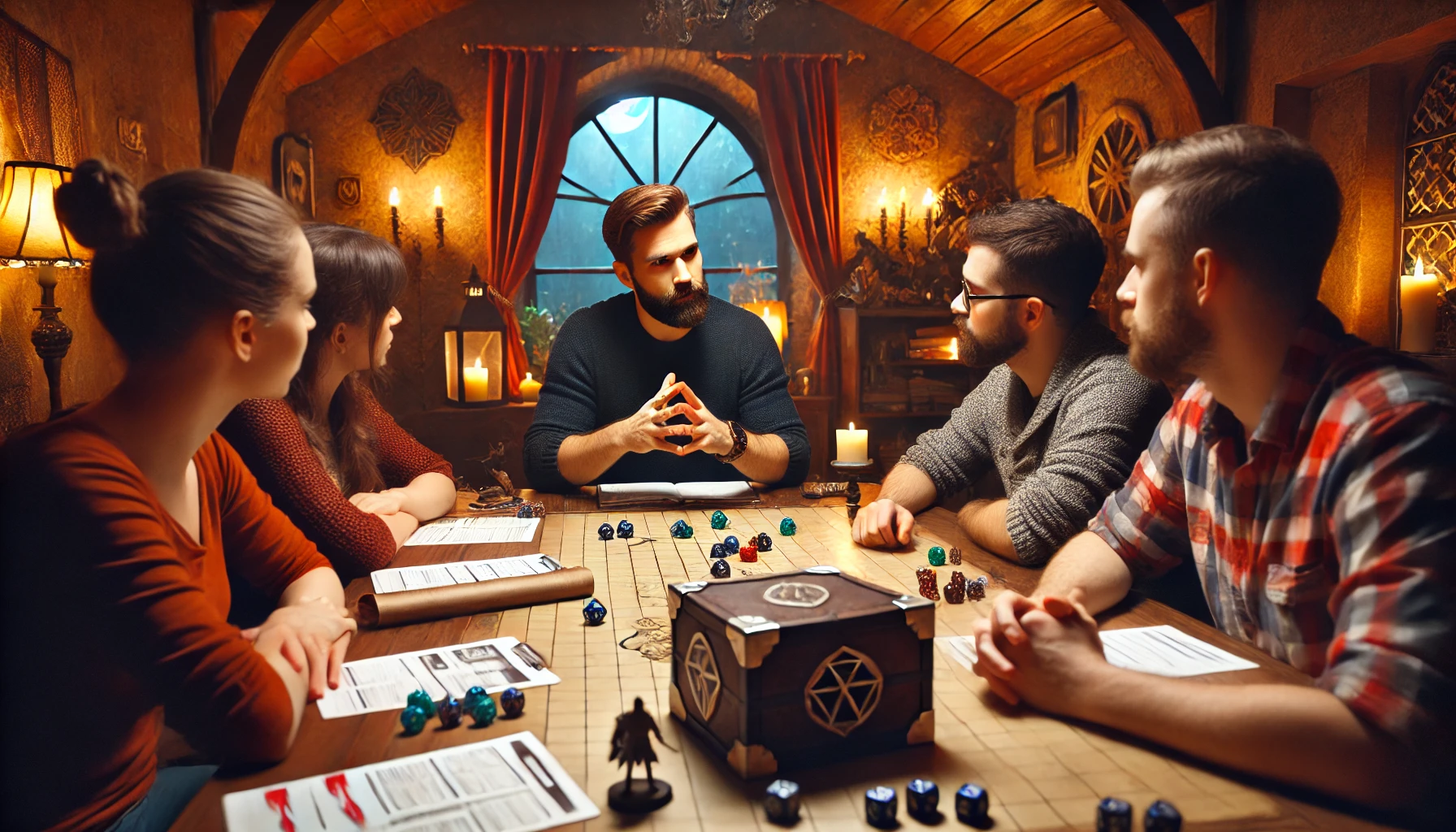
Preventative Measures
As a DM, one of the most effective ways to maintain a positive and enjoyable D&D experience is to take proactive steps to prevent conflicts from arising in the first place. By setting clear expectations, fostering open communication, and creating a strong group dynamic, you can significantly reduce the likelihood of encountering difficult players during your Dungeons & Dragons sessions. Here are some preventative measures you can implement to help keep your game running smoothly.
Setting Clear Expectations from the Start
The foundation of any successful D&D campaign is clear communication, especially when it comes to setting expectations for player behavior. One of the best opportunities to establish these expectations is during a Session Zero—a preliminary meeting where the DM and players can discuss the campaign’s tone, themes, and ground rules. During this session, you can outline the acceptable behaviors at the table, including how players should interact with one another, how disagreements will be handled, and what level of commitment is expected. By addressing these topics upfront, you create a shared understanding that can help prevent conflicts later on.
Encouraging Open Communication
Open communication is key to resolving issues before they escalate into conflicts. As the DM, it’s important to foster an environment where players feel comfortable voicing their concerns or discussing problems as they arise. Encourage your players to come to you if they’re feeling frustrated, confused, or unhappy with any aspect of the game. Regular check-ins, either during breaks or at the end of a session, can provide a safe space for players to share their thoughts. By being approachable and responsive, you can address minor issues before they turn into bigger problems, keeping your D&D game running smoothly.
Creating a Positive Group Dynamic
The dynamics among your players can greatly influence the overall atmosphere of your Dungeons & Dragons game. A positive group dynamic, where players trust and respect one another, is essential for preventing conflicts and ensuring that everyone has a great time. As a DM, you can foster this dynamic by encouraging teamwork and camaraderie within the game itself.
One way to build rapport among your players is by designing encounters that require cooperation and collaboration. For instance, you might create challenges that can only be overcome by pooling the party’s skills, or situations where characters need to work together to achieve a common goal. These experiences not only enhance the gameplay but also help strengthen the bonds between players as they rely on each other to succeed.
Additionally, take the time to get to know your players outside of the game. While D&D is the primary activity that brings your group together, understanding your players’ personalities, preferences, and playstyles can help you create a more inclusive and enjoyable experience for everyone. This knowledge allows you to tailor the game to your group’s interests, making the sessions more engaging and reducing the likelihood of conflicts.
By fostering a positive group dynamic, you create an environment where players feel comfortable, valued, and excited to participate. When players trust each other and work well together, they’re less likely to engage in disruptive behavior, and more likely to contribute positively to the game. This, in turn, makes your job as the DM easier, allowing you to focus on creating memorable adventures and ensuring that your D&D sessions are a success.
Establishing a Conflict Resolution Protocol
Despite your best efforts, conflicts may still arise during your D&D campaign. Having a conflict resolution protocol in place can help you manage these situations effectively. Consider discussing with your players how conflicts will be handled if they occur, whether through a private conversation, a group discussion, or even a brief pause in the game. By agreeing on a process beforehand, you can address issues calmly and fairly, without letting them disrupt the session. This proactive approach helps ensure that everyone at the table knows how to resolve conflicts in a way that respects the group’s collective experience.
By implementing these preventative measures, you can create a strong foundation for your Dungeons & Dragons campaign, making it easier to manage any challenges that arise. Clear expectations, open communication, a positive group dynamic, and a conflict resolution protocol are all essential tools for a DM looking to maintain a harmonious and engaging game environment. With these strategies in place, you’ll be better equipped to handle difficult players and keep your D&D sessions enjoyable for everyone involved.
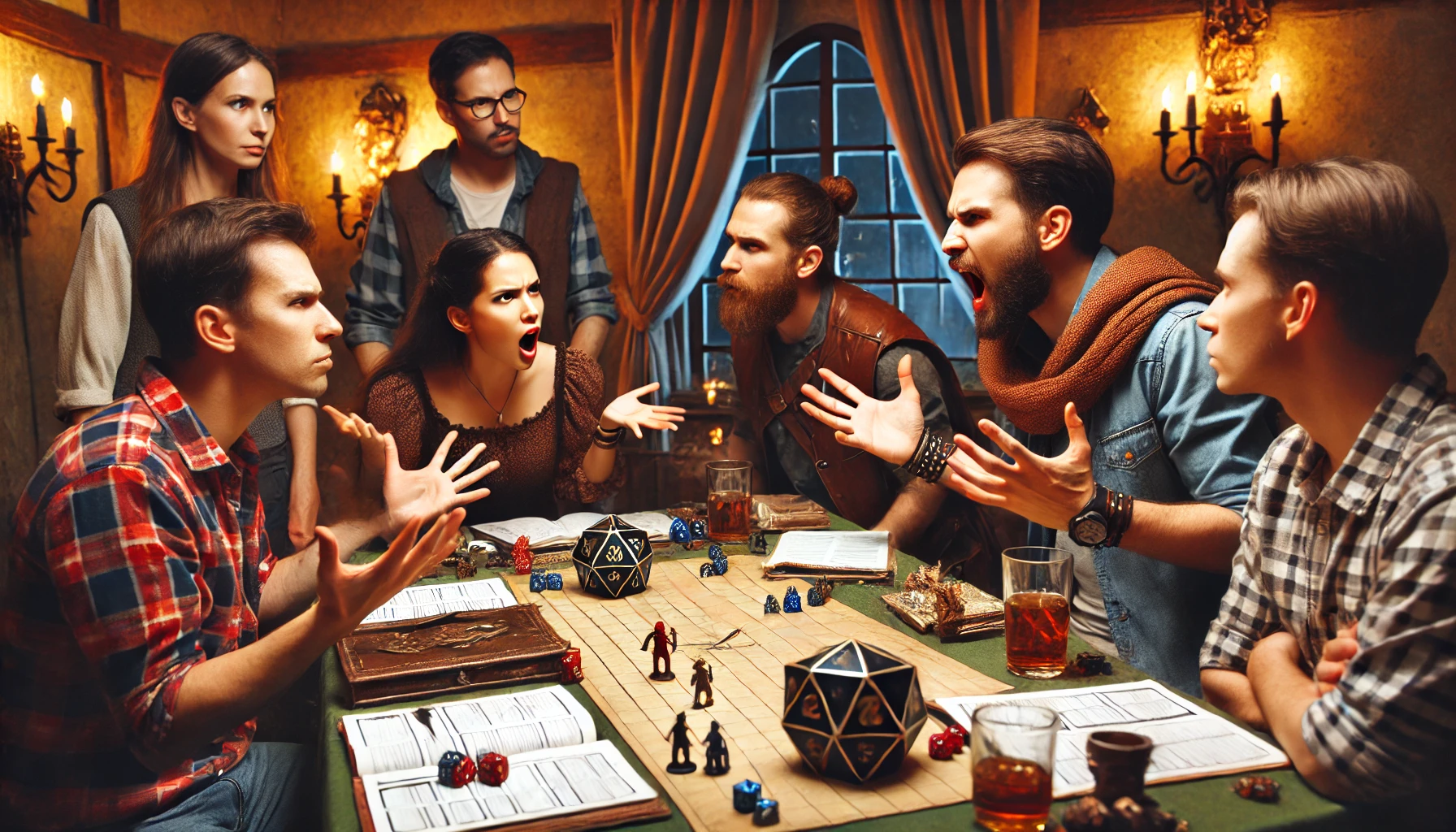
Managing Conflict When It Arises
Even with the best preventative measures in place, conflicts can still arise during your D&D sessions. As a DM, it's important to be prepared to handle these situations calmly and effectively, ensuring that the game remains enjoyable for everyone involved. When a conflict does occur, addressing it promptly and with care can prevent it from escalating and disrupting the entire session.
Addressing the Issue Directly
When a conflict arises at the table, it’s crucial to address the issue directly and as soon as possible. Ignoring or downplaying the problem can lead to resentment and further disruption down the line. As the DM, take a moment to assess the situation and determine the best approach. If the conflict is minor, a quick, calm, and direct conversation with the players involved can often resolve the issue. For example, if a player is interrupting others, gently remind them of the importance of letting everyone have their turn to speak. Addressing the behavior in a non-confrontational way can help maintain a positive atmosphere without singling out the player or making them feel defensive.
Using a Gentle Approach
In some cases, a gentle approach can be effective in diffusing tension and resolving conflicts. Humor, for instance, can be a powerful tool for lightening the mood and redirecting focus back to the game. For example, if an argument starts to brew over a rules interpretation, you might say something like, "We’ve got a lively discussion going—how about we make a quick call and move forward, so we can keep the adventure rolling?" This kind of lighthearted response can help de-escalate the situation and remind players that Dungeons & Dragons is ultimately about having fun together. Additionally, consider altering the pace or tone of the game to help alleviate tension—perhaps by introducing a new scene or taking a short break.
Taking a Break
If tensions are running high and a conflict is starting to derail the session, it might be best to call for a short break. This gives everyone a chance to step away, cool down, and return to the table with a clearer head. As a DM, you can use the break to privately check in with the players involved in the conflict, ensuring that everyone feels heard and respected. During the break, you can also take the opportunity to review the situation and plan how to steer the session back on track once play resumes. Sometimes, a few minutes away from the game is all it takes to reset the group’s energy and refocus on the adventure.
Private Discussions
In situations where a conflict involves more personal or sensitive issues, it’s often best to address the matter in a private discussion rather than at the table. Pulling a player aside for a one-on-one conversation can help you understand their perspective and find a resolution without putting them on the spot in front of the entire group. When having these discussions, approach the player with empathy and a willingness to listen. Focus on the specific behavior that’s causing the issue, rather than making it about the player themselves. By showing that you’re invested in resolving the conflict in a fair and considerate way, you can often find a solution that works for everyone.
Mediation Techniques
In some cases, conflicts may arise between players that require more formal mediation. As the DM, you can serve as a neutral party to help facilitate a resolution. Start by giving each player involved in the conflict an opportunity to explain their side without interruption. Listen carefully to both perspectives and acknowledge their concerns. Then, work with the players to find a compromise or solution that addresses the issue while keeping the game’s flow intact. It’s important to ensure that the resolution is fair and that all players feel their voices have been heard. Effective mediation not only resolves the immediate conflict but can also strengthen the group dynamic by building trust and understanding.
By managing conflicts promptly and thoughtfully, you can prevent them from overshadowing the enjoyment of your D&D sessions. As a DM, your role includes guiding the story and ensuring that the group dynamic remains positive and cooperative. Whether it’s addressing a disruptive behavior, mediating between players, or simply taking a break to cool down, handling conflicts with care helps maintain the integrity of your Dungeons & Dragons campaign and ensures that everyone at the table continues to have a good time.
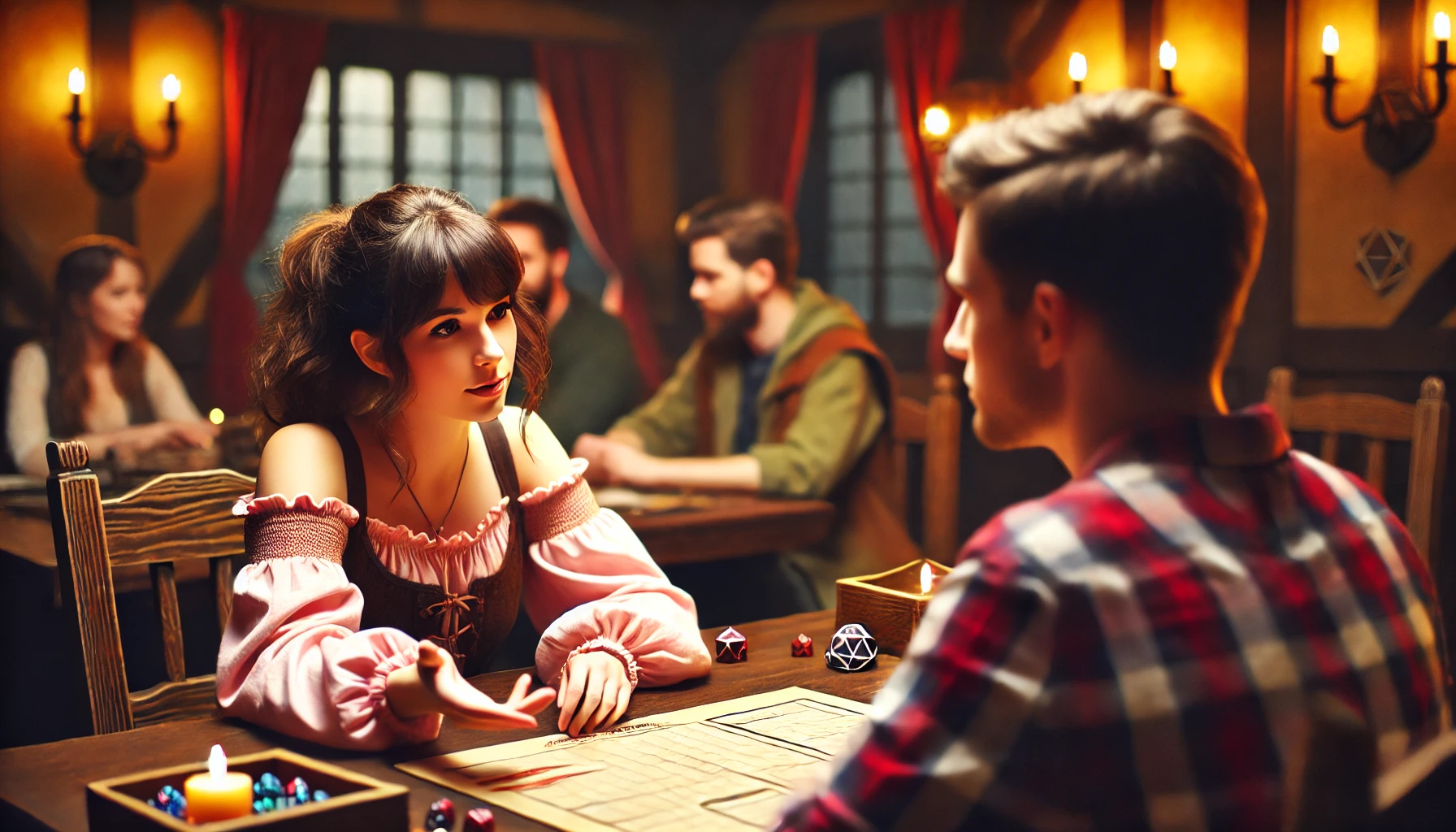
Long-Term Solutions
While addressing conflicts as they arise is essential, implementing long-term solutions can help prevent recurring issues and ensure a more harmonious gaming experience over time. As a DM running a D&D campaign, your goal is to create an environment where everyone can enjoy the game and contribute positively to the story. By taking proactive steps to address ongoing challenges, you can foster a healthier group dynamic and keep your Dungeons & Dragons sessions running smoothly.
Regular Check-Ins
Regular check-ins with your players can be an effective way to address minor issues before they become major problems. These check-ins don’t have to be formal—simply taking a few minutes at the end of each session to ask how everyone is feeling about the game can make a big difference. Encourage your players to share their thoughts on what they enjoyed, what they found challenging, and any concerns they might have. By creating an open dialogue, you can stay attuned to the group’s dynamics and make adjustments as needed. Regular check-ins also show your players that you value their input, which can help build trust and keep everyone engaged.
Adjusting the Game’s Structure
Sometimes, the structure of the game itself may need to be adjusted to better suit the group’s needs. For example, if you notice that combat encounters are causing tension or frustration, you might consider scaling back the difficulty or focusing more on role-playing elements. Alternatively, if certain players are feeling overshadowed, you could design specific scenes or challenges that highlight their characters’ strengths. As the DM, it’s important to be flexible and willing to adapt your approach based on what’s working best for your group. These adjustments can help ensure that everyone has a chance to shine and that the game remains enjoyable for all.
Offering Compromises
In some cases, conflicts may arise because players have different expectations or preferences for the game. When this happens, offering compromises can be a way to resolve disagreements while keeping everyone invested in the campaign. For example, if one player prefers a more combat-heavy style of play while another enjoys role-playing, you could alternate between combat-focused sessions and sessions that emphasize story and character development. By finding a middle ground that accommodates different playstyles, you can create a more balanced experience that appeals to everyone at the table.
Considering Group Composition
If conflicts persist despite your best efforts, it may be necessary to re-evaluate the group’s composition. While it’s never easy to consider asking a player to leave, sometimes it’s the best option for the health of the group as a whole. Before taking such a step, try having a candid conversation with the player about the issues at hand and explore possible solutions. If the behavior continues to disrupt the game and affects the enjoyment of others, it may be time to make a difficult decision. As a DM, your responsibility is to the entire group, and ensuring a positive experience for the majority sometimes means making tough choices about group dynamics.
By implementing these long-term solutions, you can help create a more stable and enjoyable environment for your D&D campaign. Regular check-ins, adjusting the game’s structure, offering compromises, and carefully considering the group’s composition are all strategies that can contribute to a healthier group dynamic. As a DM, your ability to adapt and respond to the needs of your players is key to maintaining a successful and harmonious Dungeons & Dragons game.
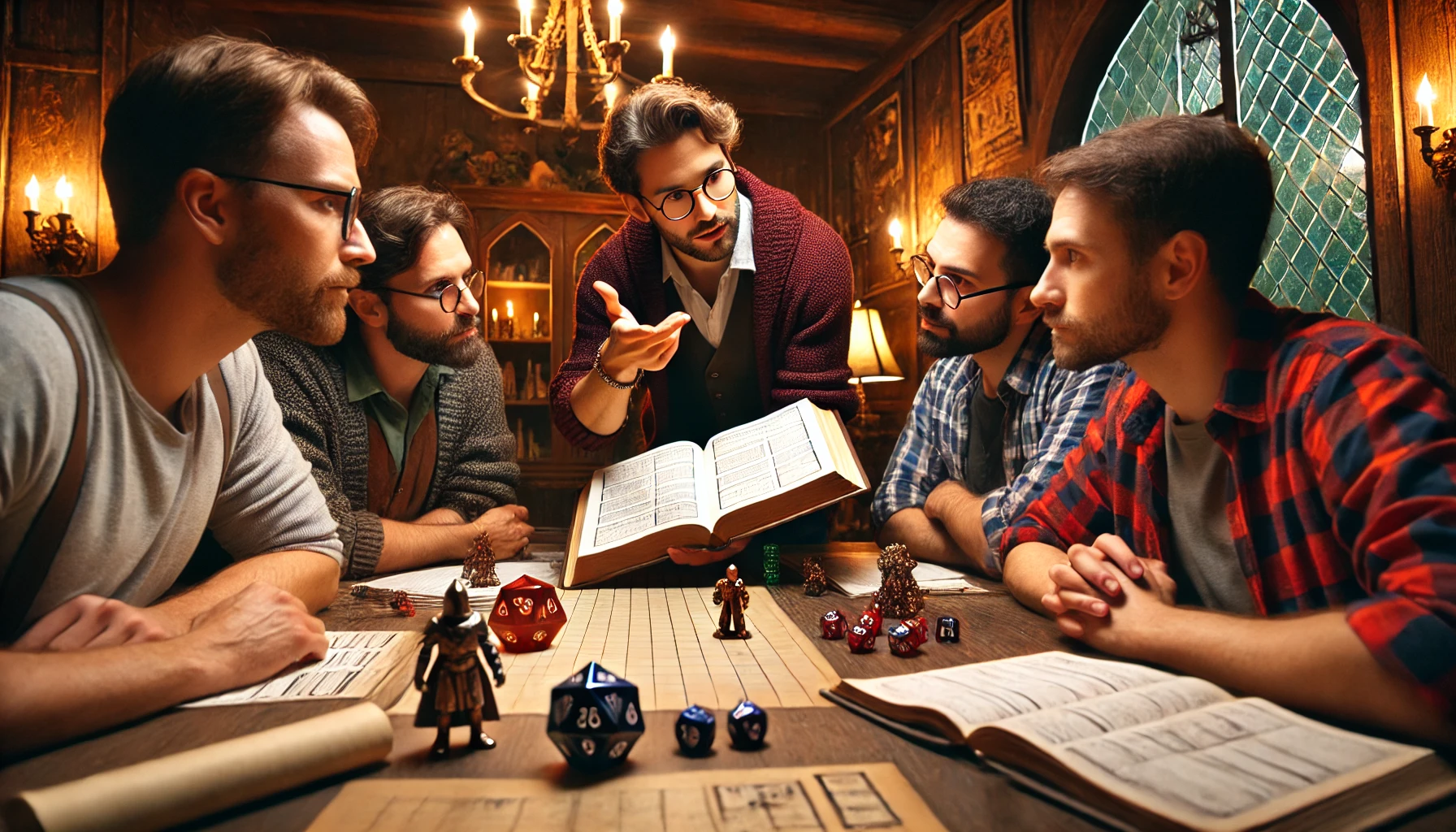
Case Studies and Examples
One of the most effective ways to understand how to handle difficult players and resolve conflicts is by looking at real-world examples. By examining how other DMs have navigated these challenges, you can gain valuable insights and apply similar strategies to your own D&D sessions. In this section, we’ll explore a few hypothetical case studies that illustrate common conflicts at the table and how they were successfully resolved.
Case Study 1: The Disruptive Player
In one Dungeons & Dragons campaign, the DM noticed that a particular player frequently interrupted the game with off-topic comments and jokes, which disrupted the flow of the session and frustrated other players. Rather than confronting the player in front of the group, the DM decided to address the issue privately after the session. During their conversation, the DM gently explained how the interruptions were affecting the game and asked the player if there was a specific reason for their behavior. The player admitted that they were feeling left out and were trying to get more attention. The DM then worked with the player to find ways to better incorporate their character into the story, ensuring they felt more involved without needing to disrupt the game. As a result, the player’s behavior improved, and the group dynamic became more positive.
Lesson Learned: Addressing disruptive behavior privately and with empathy can help you understand the root cause of the issue and work together with the player to find a solution that benefits everyone.
Case Study 2: The Rules Lawyer
In another D&D campaign, a player who was well-versed in the game’s rules frequently challenged the DM’s rulings, leading to arguments that slowed down the game and frustrated other players. To resolve the issue, the DM decided to establish a clear rule that any rules disputes would be briefly discussed at the table, but the final ruling would be made by the DM to keep the game moving. The DM also encouraged the Rules Lawyer to discuss any major concerns after the session, where they could go over the rules in more detail. Over time, the player came to respect the DM’s authority during the game, and the group adopted a more streamlined approach to handling rules questions, which kept the sessions flowing smoothly.
Lesson Learned: Establishing clear boundaries and procedures for handling rules disputes can help prevent conflicts and maintain the pace of the game.
Case Study 3: The Spotlight Hog
During a long-running Dungeons & Dragons campaign, one player consistently took center stage, often overshadowing the contributions of other players. The DM noticed that this behavior was causing frustration among the rest of the group, who felt that their characters weren’t getting enough time in the spotlight. To address this, the DM started designing specific scenes and challenges that focused on the other players’ characters, ensuring that everyone had a chance to shine. The DM also spoke privately with the Spotlight Hog, encouraging them to be mindful of sharing the spotlight and to support their fellow players during their moments. This approach helped balance the group dynamic and made the game more enjoyable for everyone.
Lesson Learned: Balancing spotlight time among players and creating opportunities for everyone to contribute can help reduce feelings of frustration and foster a more inclusive game environment.
Case Study 4: The Uncooperative Player
In a D&D campaign, one player repeatedly refused to cooperate with the party, pursuing their own goals at the expense of the group’s objectives. This behavior led to in-game conflicts and derailed the storyline. The DM decided to address the issue directly by discussing the problem with the player outside of the game. During the conversation, the DM explained how the player’s actions were affecting the group and asked if there was a way to better align their character’s goals with the party’s mission. The player agreed to adjust their character’s motivations to be more in line with the group’s goals, which improved cooperation and brought the party back together.
Lesson Learned: Direct communication and collaboration with the player can help align individual goals with the group’s objectives, reducing conflict and enhancing teamwork.
Case Study 5: The Distracted Player
In one campaign, the DM noticed that a player frequently checked their phone and seemed disengaged during sessions. This behavior slowed down the game and made it difficult for the DM to maintain momentum. To address the issue, the DM decided to introduce more interactive elements, such as puzzles and role-playing opportunities, that required the player’s full attention. The DM also spoke privately with the player, asking if there was anything they could do to make the game more engaging for them. The player appreciated the conversation and agreed to focus more during the sessions, leading to a more engaged and attentive group.
Lesson Learned: Tailoring the game to engage all players and having open conversations about their needs can help keep everyone invested in the session.
These case studies illustrate common challenges that DMs may face when dealing with difficult players in a D&D campaign. By applying the lessons learned from these examples, you can better navigate conflicts at your table and create a more harmonious and enjoyable gaming experience for everyone involved.
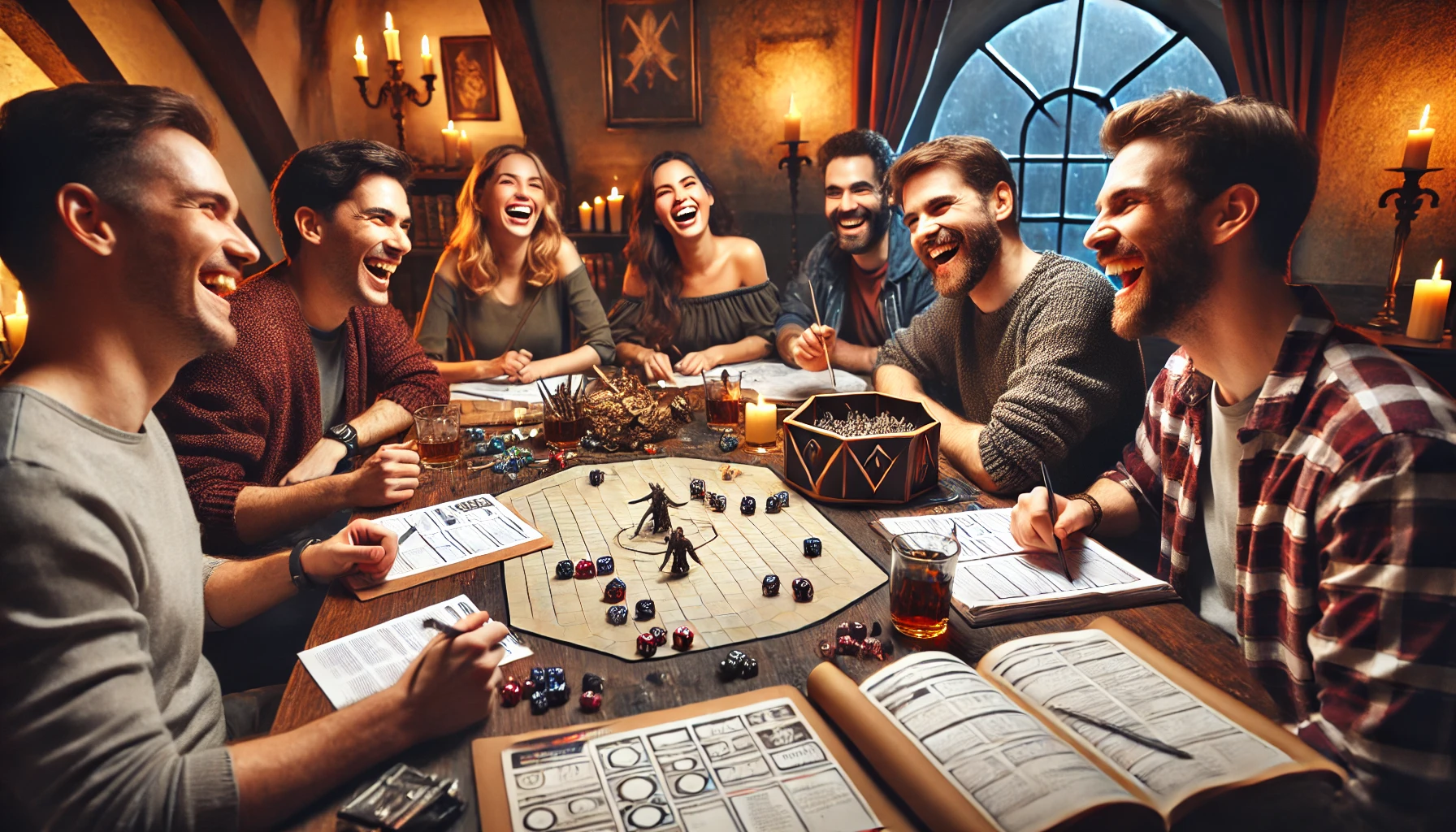
Moving Forward
As a DM, your role extends beyond just telling a great story and managing the mechanics of Dungeons & Dragons; you’re also responsible for fostering a positive and collaborative environment at the table. Dealing with difficult players and resolving conflicts is an inevitable part of running a long-term D&D campaign, but it doesn’t have to be a source of stress. By understanding the types of difficult players, implementing preventative measures, and addressing issues with empathy and clarity, you can turn these challenges into opportunities for growth and stronger group dynamics.
Throughout this guide, we’ve explored various strategies for managing conflict, from setting clear expectations during Session Zero to mediating disputes and making necessary adjustments for the long-term health of your campaign. By applying these techniques, you can create a more harmonious gaming experience where every player feels valued and engaged.
Remember, every D&D group is unique, and there’s no one-size-fits-all solution. The key is to remain flexible, listen to your players, and be willing to adapt your approach as needed. Whether you’re dealing with a disruptive player, navigating a rules dispute, or balancing spotlight time, your ability to handle conflicts with care will contribute to the overall success of your campaign.
We hope these insights have provided you with the tools and confidence to manage difficult situations at your table effectively. As you continue your journey as a Dungeon Master, don’t hesitate to reach out to your community for support, share your own experiences, and keep learning from each session.
And now, we’d love to hear from you! Have you encountered difficult players in your D&D games? How did you handle the situation? Share your stories and tips in the comments below, and let’s continue the conversation about building better, more inclusive gaming experiences.
Dungeon Master Dispatch